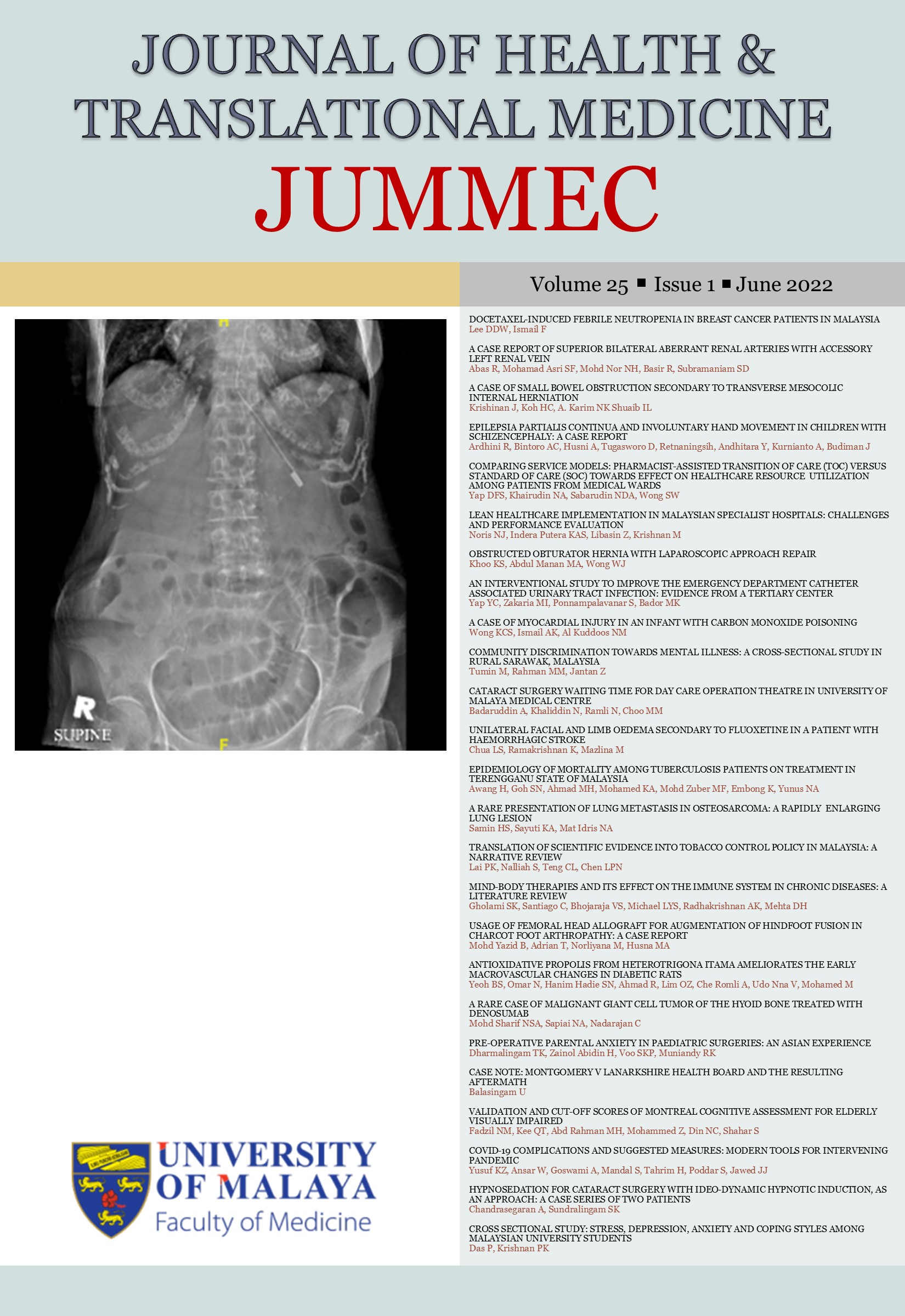AN INTERVENTIONAL STUDY TO IMPROVE THE EMERGENCY DEPARTMENT CATHETER ASSOCIATED URINARY TRACT INFECTION: EVIDENCE FROM A TERTIARY CENTER
Received 2020-11-11; Accepted 2021-10-03; Published 2021-12-06
DOI:
https://doi.org/10.22452/jummec.vol25no1.8Keywords:
Keywords: Catheter associated urinary tract infection (CAUTI); E- learningAbstract
Background: The Emergency Department (ED) is the major entry point for patients admitted into the hospital. The continued use of urinary catheters from the ED is identified as a risk for patients to develop catheter associated urinary tract infection (CAUTI).
Objective: This study aimed firstly to identify the prevalence of ED-related CAUTI in our centre, University Malaya Medical Centre and the appropriateness of catheter use among all the cases. Secondly, to assess the impact of a urinary catheter care bundle E-learning training module on the rates of CAUTI and appropriate use of urinary catheter.
Method: A pre-post intervention study was conducted between June 2017 and April 2019. A retrospective analysis was conducted to assess the changes in infection rate before and after the training module. The urinary care bundle E learning tutorial module was developed, and all ED staff were trained using this module from September 2018 to November 2018. Outcome measures were the prevalence rate of ED-related CAUTI, the rate of appropriateness indication in urinary catheter insertion and the association between patient’s characteristic and the rate of appropriateness in urinary catheterization.
Result: The CAUTI rates were significantly dropped from 17.04 per 1000 device days in pre-intervention period to 7.4 in post-intervention period (p=0.03).
Conclusion: An online training module on urinary catheter bundle effectively reduced CAUTIs but not improve the appropriate use of urinary catheter. Therefore, further study is needed to improve the rate of appropriateness in urinary catheter insertion.
Downloads
Downloads
Published
Issue
Section
License
All authors agree that the article, if editorially accepted for publication, shall be licensed under the Creative Commons Attribution License 4.0 to allow others to freely access, copy and use research provided the author is correctly attributed, unless otherwise stated. All articles are available online without charge or other barriers to access. However, anyone wishing to reproduce large quantities of an article (250+) should inform the publisher. Any opinion expressed in the articles are those of the authors and do not reflect that of the University of Malaya, 50603 Kuala Lumpur, Malaysia.


